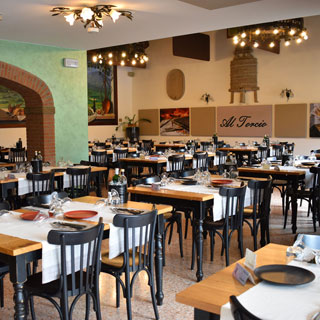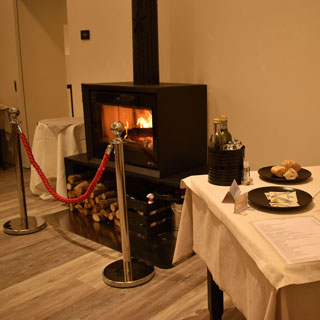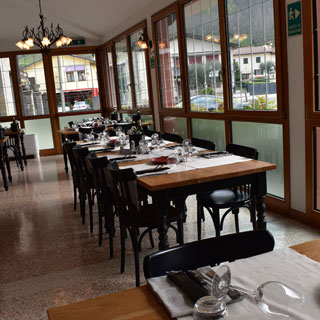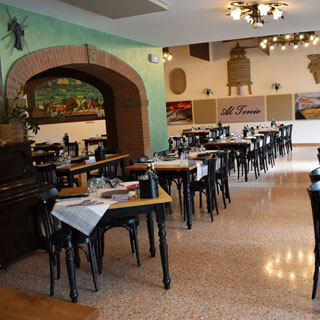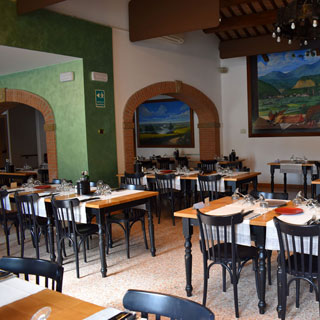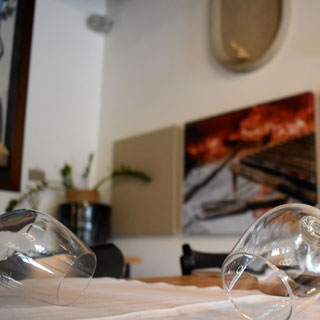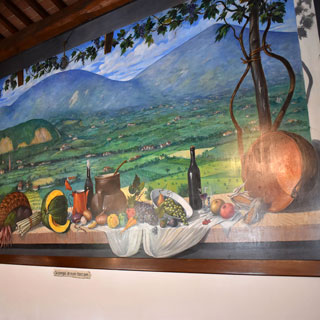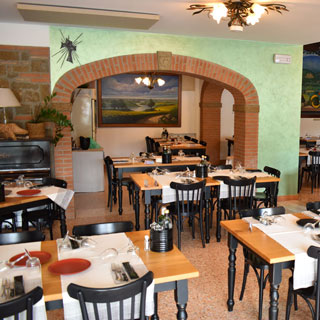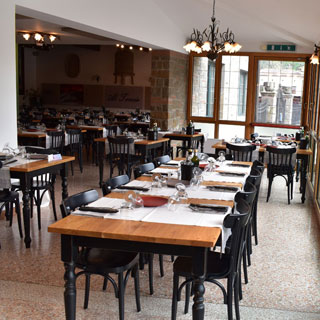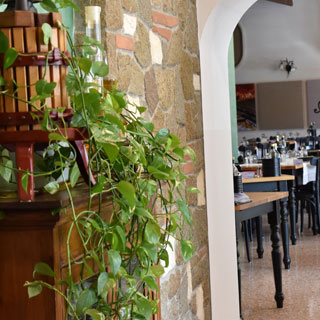Restaurant with typical Venetian cuisine and homemade pasta on the Euganean Hills
Vo' and the Euganean Hills
The Trattoria Al Torcio offers a cuisine based on genuine foods such as fresh homemade pasta, grilled meats and Vicenza-style cod
The Euganean Hills in the province of Padua
A flat expanse for kilometers and kilometers and then suddenly, like mushrooms, low hills with a curious conical shape sprout here and there. They are the Euganean Hills, a series of volcanic formations of very ancient origin just over ten kilometers from the center of Padua.
So close, they are able to make you forget the city and its frenzy: surrounded by greenery, the Euganean Hills are a fresh oasis of peace and harmony. It is no coincidence that over the centuries they have been chosen as their home or holiday destination by poets, monks and sovereigns. In the greenery of the Euganean Hills there are also enchanting historic villages, with their perfectly preserved walls, castles and other wonders to discover.
Vo' Euganeo
Typical Venetian trattoria with local cuisine in Vo' Euganeo, on the Euganean Hills
Vo' is one of the 15 municipalities of the Euganean Hills which rises at the foot of Monte Venda.
It is made up of 4 fractions; Boccon, Cortelà, Vo' Vecchio and Zovon.
It is one of the five Italian municipalities with the shortest name, only two letters, to which it is good to remember that you should not put an accent but an apostrophe.
Famous for the production of wine, Vo' is a forge of prestigious labels, some of which have also received important awards.
Vo' is also known for the extraction of trachyte, a stone much appreciated both in the civil and industrial fields.

The Trattoria Al Torcio in Vo' Euganeo is a location for events and ceremonies on the Euganean Hills
What to visit in Vo'
Villa Contarini Giovanelli Venier
It is located in the hamlet of Vo' Vecchio, once a marshy area, later reclaimed at the behest of the Venetian Contarini family, Villa Contarini Giovanelli Venier is located right in the heart of the hamlet. Located next to the Church of San Lorenzo, it was the municipal seat until 1902. The structure dates back to the end of the 16th century and draws inspiration from Venetian palaces. In the 1800s the property passed to the Giovanelli-Venier family and subsequently to the Emo Capodilistas. It becomes sadly famous during the Second World War, when the Nazis requisition it to use it as a temporary concentration camp. 60 men, women and children were segregated here for months before suffering the fate of millions of Jews around the world. It was in the 1950s that the villa became the property of the Municipality of Vo'. Completely restored, it now houses the Landscape Museum, it is a place of memory of the Shoah.
Euganean Hills Wine Museum
It represents the vocation of the Vo' area for viticulture, already practiced in ancient times and now one of the major strengths of the Paduan municipality. Strengthened by the volcanic origins of their lands, Colli are fertile ground for vines, whose cultivation has accompanied the Euganean people for years. The MUVI is a precious container of local historical memory.
Villa Sceriman
Headquarters of the Villa Sceriman farm, it sees its first documented historical records dating back to 1447 when the noble Paduan family of Santa Sofia had an accurate cartography of the area drawn up. We have subsequent news in 1740, when the Sceriman family acquired the property. In 1959 the main building underwent a complete restoration and the farm, from mixed cultivation, focused on the wine-growing activity.
Ruins of the Olivetani Monastery
It is a place with a unique charm, a destination much appreciated by many local photographers and photo amateurs due to its characteristics and particular position. The ruins of the Olivetani Monastery is what remains of an ancient hermitage, which became a monastery in 1229. In 1771 the Serenissima decreed its suppression. From that moment the complex begins a slow and progressive decay. From a height of 600 m, these ruins enrich the amazing panoramic view which, on clear days, even allow you to see the Venice lagoon.
Quality of Trattoria Al Torcio and map
You can taste specialties selected from the best Venetian culinary tradition.
The trattoria offers a cuisine based on genuine foods such as fresh homemade pasta ("bigoli" or "bigoi", the typical Venetian pasta, fettuccine, gnocchi with various sauces), grilled meats and cod "alla vicentina". Try the herbs cooked with sauté as they did in the past, the hand-cut fries and the side dishes according to the season. In addition of course to the inevitable polenta.
A selection of wines chosen from the companies of our land, but not only, accompanies these tasty dishes.
